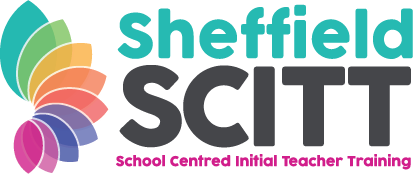Cognitive Load theory: just do your best.
“The recent cognitive science evidence review from the Education Endowment Foundation (EEF) (ref [3]) has caused me to reflect once more on Cognitive load theory”.
Alastair Gittner, Sheffield Associate Research School lead.
The EEF suggests that the research behind managing cognitive load “is promising” and provides a number of strategies how this can happen or be approached in the classroom. In April Professor Guy Caxton published his book (The Future of Teaching And the Myths That Hold It Back Ref [5]) where he wrote a critique of the theory and this resulted in a flurry of social media debate, for example this blog (ref [4]). So what should we make about what Dylan Wiliam once described as “The is the single most important thing for teachers to know”?
As I will be discussing this with our ITE trainees in a few weeks’ time here are some thoughts and some suggestions for further reading.
1. The classic memory diagram is a simplification
This diagram is becoming more and more popular in teacher CPD sessions and is a useful model for discussing learning. Although it has been criticised for its similarities to the structure of a computer with its random-access memory, hard disc, graphics card analogies, it is useful for simplifying what is happening during learning. If nothing else it gives us some nomenclature to work with. It is however a simplification. It is usually originally attributed to Atkinson and Shiffrin from their work in the 1960s but since then our understanding of the structure of the brain has improved, largely due to the improvements in brain visualisation. Any current model starts to get more and more complicated with a central executive, phonological loops etc etc so as long as we remember there are no boxes in the brain, the model is a simplification, we can work with it for now. If you are interested in further models see Baddeley’s review (Ref [1]).
Cognitive load theory CLT is the idea that the working memory WM is of a small fixed size and can be overwhelmed during instruction so that what is encoded into the LTM (learning) is sub-optimal. As teachers we are urged to control the cognitive load of material so that learning is maximised.
2. Working memory deficits are important for teachers to consider.
A trawl through the EHC plans for children in an average school will reveal numbers of them with deficits in working memory. Susan Gathercole has suggested 10% of children may have poor working memory. (Ref [2]) Her work highlights that in school this often goes undetected with these children demonstrating other more pressing concerns around their behaviour or lack of engagement. Many of the studies on working memory are laboratory based and involve recital of strings of words and or numbers and so there is again controversy about how much information the average working memory can hold in a real classroom lesson but as long as we remember it is relatively small for everybody then that is a start.
3. Cognitive load cannot be given a number.
As the link between WM and LTM is more complicated than the diagram, calculating the cognitive load of a task is almost impossible. For some critics of CLT this is a big problem; if we cannot measure it how do we know it’s there or how do we control it? It is much more useful to think about it relatively. We can change how we present a task to learners and increase the cognitive load, conversely, we can also provide support and make the load lower. We should consider the cognitive load always when we are planning lessons.
4. Cognitive load can change from class to class, from student to student, from day to day, from period to period.
Another further simplification I like comes from Frederick Rief that I was introduced to by Adam Boxer (Ref [6])
Here we can see that if we increase the “demand” of a task, for example by how we present the information, the time available to complete the task or the intrinsic difficulty as judged by us the professionals; then the cognitive load increases. On the other hand, if we provide more resources either by simplifying the presentation, helping students to link to their prior knowledge, providing work frames or other scaffolds then the cognitive load is reduced. Whilst we as the teacher can attempt to control available resources there are many factors beyond our ability. If a child has argued with friends or family, has not had breakfast, is bored, was self-isolating when the important bit of necessary prior knowledge was taught; all of these will reduce the available resources they can bring to the problem. Some of these may not be present tomorrow. Some of them will not be present after lunch. Next week there will be new challenges.
5. So just do your best.
I could go on further and discuss dual coding and how we can alter our presentations to reduce CLT, I could discuss support strategies and fading scaffolding, and I could write lengthy reviews on current models of memory architecture. But instead I am going to suggest that as teachers yes we should consider CLT, we should be aware of it in our lesson planning and teaching, and we should have strategies to alter it in both directions (the usefulness of increasing CLT is a whole blog post in itself.) For some of the reasons above we will not pitch it right for every student, every time and so in the end all we can do with CLT is do our best.
References
1. For a review of current models of memory see Baddelely https://www.annualreviews.org/doi/abs/10.1146/annurev-psych-120710-100422
2. Gathercole
https://www.stem.org.uk/resources/elibrary/resource/357991/understanding-working-memory-classroom-guide (free download but needs registration)
3. EEF Cog sci review
https://educationendowmentfoundation.org.uk/education-evidence/evidence-reviews/cognitive-science-approaches-in-the-classroom
4. Greg Ashman’s blog
https://fillingthepail.substack.com/p/is-cognitive-load-theory-just-like
5. Guy Caxton’s book and blog
https://www.routledge.com/The-Future-of-Teaching-And-the-Myths-That-Hold-It-Back/Claxton/p/book/9780367531645
https://www.guyclaxton.net/post/cognitive-load-theory-just-brain-gym-for-traditionalists
6. Adam Boxer’s blog
https://achemicalorthodoxy.wordpress.com/2018/10/25/simplifying-cognitive-load-theory/







